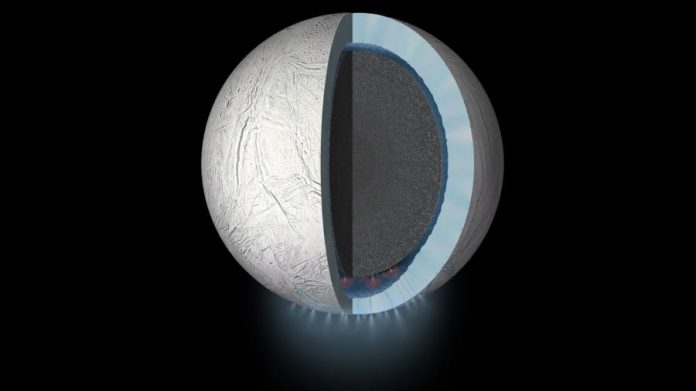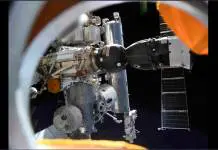
NASA scientists leading the Cassini mission to Saturn’s moons have found evidence of hydrothermal vents lying beneath the surface of Enceladus, and it has all the right elements to potentially harbor forms of microbial life.
The agency also announced the Hubble Space Telescope had documented further instances of water vapor plumes in the surface of Europa, one of Jupiter’s moons. The activity on this other frozen moon is similar to that of Enceladus.
Both announcements represent NASA’s latest efforts in unveiling the mysteries of potential ‘ocean worlds’ in our solar system. Research on the surface of Mars suggests that this was also the case once in the Red Planet, but humans still plan on inhabiting it in the coming decades.
Enceladus has all the ingredients to host life on its ocean
“THIS IS JUST THE FINAL STEP THAT SHOWS THERE’S MOLECULAR HYDROGEN BEING PRODUCED BY THESE SAME HYDROTHERMAL PROCESSES, AND THAT MOLECULAR HYDROGEN HAS THE CHEMICAL ENERGY TO SUPPORT MICROBIAL SYSTEMS IN THE INTERIOR OCEAN,” Hunter Waite said.
Waite was the lead author of a paper published in the journal Science this same Thursday. The piece of research further explains the processes that could lead to finding alien life on neighboring planets in the future.
Researchers point out that there are three key ingredients needed to sustain life, at least in theory. There needs to be liquid water, an energy source, and essential chemical elements such as hydrogen, oxygen, nitrogen, carbon, and others.
Cassini scientists have failed to identify two chemical components, phosphorus, and sulfur, from the vapor ejections coming from its surface. It is believed, though, that the core of Enceladus has these essential elements.
Microbial life on Earth and all following forms of life started pretty much in the same way. We owe our existence to a mixture of these ingredients millions of years ago, a process that could or could have happened already beneath the surface of Saturn’s small icy moon.
In the next planet over, however, Jupiter’s Europa still guards secrets about the chemical composition and life potential underneath its frozen crust. Scientists have taken a new step towards uncovering these mysteries.
They have discovered that these vapor water plumes ejecting from the surface are a phenomenon that happens at the same location in regular intervals of time. Mapping the temperature of the moon shows these geysers occur right under a thermal anomaly where water is hot.
The Europa Clipper mission will launch in the coming years, equipped with next-generation instruments that can detect and analyze the elements that compose these plumes. Jupiter’s moon could also be an excellent candidate for undetected alien life in the solar system.
Source: NASA











